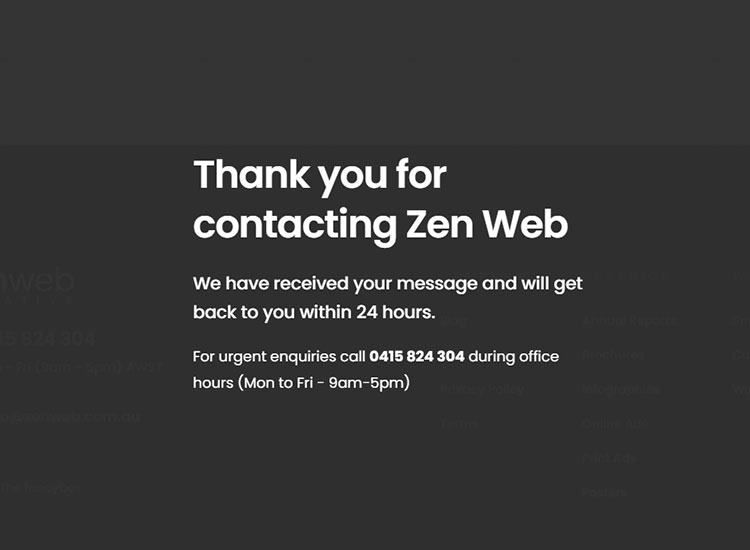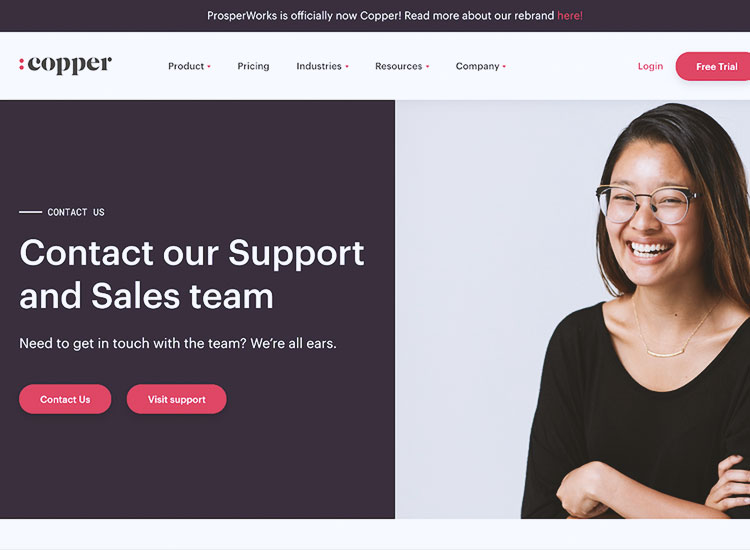The time users spend interacting with websites is in mere seconds. That is reason enough to improve this overlooked page on most businesses - the Contact Us page.
Follow the recommended guidelines to improve the web design of your business website. Most of the recommendations in this article seem obvious at first glance. But implementing them could minimise losing new business opportunities.
1.What to display on your contact page
Your business 'Contact Us' page should contain at the very least a phone number and an email address. A contact form and nothing else will only infuriate users who prefer other methods.
Information you should place on the contact page
- business phone number
- email address
- corporate/headquarters address
- local addresses (if relevant)
- social media
Other best practices for displaying contact information:
- list secondary phone numbers
- emails by department (sales, accounts, support, etc.)
- a location map or a link to a map application
- business hours of operation
- time zones – for nationwide or overseas audiences
- fax numbers (you’d be surprised)
- a Frequently Asked Questions (FAQ) section
2.Always place the Contact Us link where visitors expect to find it
Findings from the Nielsen Norman Group's (NNG) usability opens in new window eye-tracking research has discovered that:
‘if you ask users to find the Contact Us page on a website, they will look in the top right corner of the page or down in the footer’
Many sites fail to place the Contact Us link in either of the key areas the NNG mentioned above.
Some businesses may even change 'Contact Us' and use 'Resources' or 'Help Centre' instead. This is not a recommended practice.
If a user wants to communicate with a business they always look for the label ‘Contact Us’.
Also, users view businesses that hide or don’t place obvious links to the Contact page as untrustworthy, evasive, and unreliable.
The other thing NOT to do is placing 'Contact Us' under the 'About' navigation link. The Contact link should always be featured at the header or the footer of your business website.

3.Always include and never hide your business telephone number
Display your business contact numbers in plain sight and key locations. It will put to rest any fears and doubts about the validity of your business.
Build trust and show honesty by letting customers contact your business
Showing your phone number suggests that you care and are available to customers. Hiding your number is evasive behavior. It implies you can’t be bothered addressing your customers.
Most people prefer talking to a real person. They will only use email, contact forms, and chats if their requirements aren’t time-sensitive

4.Let customers know when you will reply
Indicate a timeframe to give your customers an idea of when you will respond. This will help them decide how to proceed next.
It will also increase customer confidence they will get a response from you.
For example, if it takes 24 hours to respond to their email, they may choose another method to contact you.
It may even prompt them to try to solve the issues themselves.
If they don't mind waiting then at least they have peace of mind knowing you will get in touch.
Make sure to send a 'Thank You' message whenever you receive an email or query from your contact form.
Include other methods of communicating in your message in case it's an emergency.

5.Put a face to your company to improve customer interactions
Ever hear complaints like "I want to talk to somebody real"! Customers tend to feel anxious or annoyed when things don't go their way.
These feelings get compounded if the only communication channels are emails or chats. You can't change the way customers feel, but you can ease their stress a little.
opens in new window Research shows that faces promote trust and form positive impressions of the business. It has a relaxing and calming effect and promotes cooperative behaviours.
Putting faces on your page builds confidence in your customers you will help them. Showing them real humans may help relax them when they interact with you.

6.Not everybody will use a contact form
Contact forms can be a surprisingly negative experience for certain people. Some users are cynical and fear their emails will be captured for marketing purposes.
Others feel they are surrendering control of the conservation into the business's hands. They often wonder ‘When’ or ‘If’ their queries will be answered.
Having a contact form without other contact information can harm your business' credibility. It could foster suspicion of your brand.
Make sure your form is one of many channels as opposed to the only channel of communication.
When including a form on the contact page, it is a good idea to adhere to a few simple best practices.
This will remove obstacles to communication between your business and your customers.
Try to limit and focus the form to 3 main fields (you only need enough details to reply). Ask for their Name, Email address to respond to, and a brief description of the question or issue.
Be cautious of asking for phone numbers (if you do make it an optional field).
Bear in mind that if your form has many fields, chances are users won’t complete the form and that could lead to a potential loss in new business.

7. Only include social media if you can promptly respond
These days, most businesses have between 3-5 different social media channels.
Yet, businesses often don’t realise the full potential of social media. Especially when it comes to using it as a tool for talking to their customers.
If you include social media links on your contact page then prepare for visitors to use them. Customers will ask questions or resolve issues and not use it to only follow your brand.
Make sure you have trained staff that can respond to queries in a timely fashion. User expectations are immediate when it comes to social media.
When companies aren’t timely with their responses they are harming the user’s perception of their brand.
Conclusion
It is almost impossible to gauge a user’s preference for how they want to interact with your company. Many factors influence and impact the customer’s final decision.
The time they have to spare. Their perception of the reliability of the channel. How at ease they are using that channel. All these reasons make it crucial to have a variety of communication methods.
Users expect and rely on traditional means of contact. Remember not to hide your business phone numbers. And don’t replace contact information with channels such as chat and contact forms.
